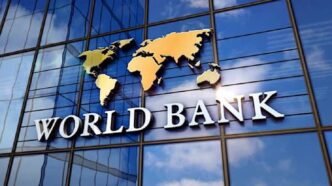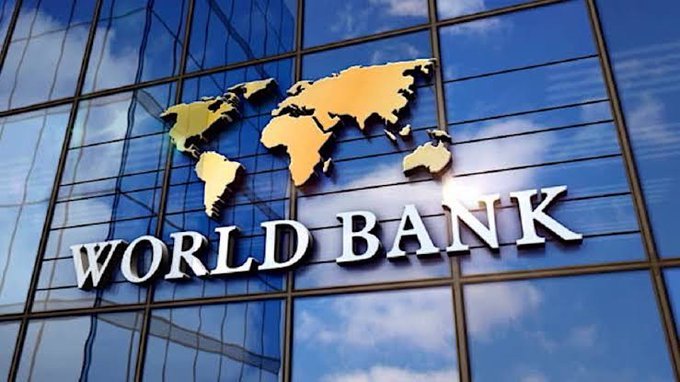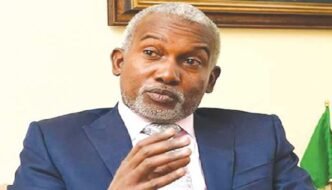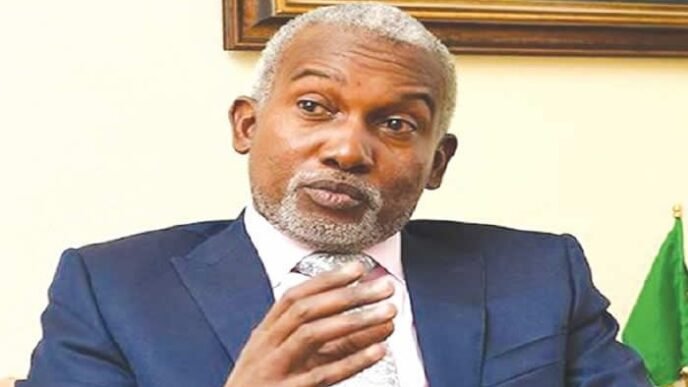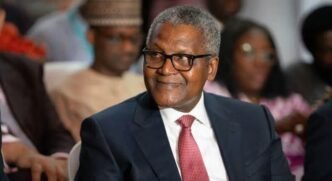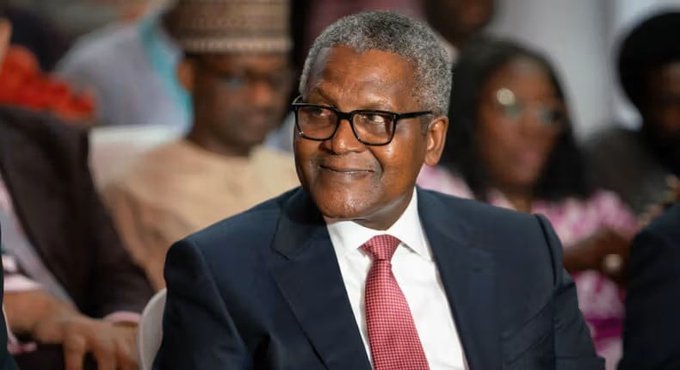Nigeria’s total public debt has surged to N152.40 trillion as of June 30, 2025, according to new figures released by the Debt Management Office (DMO) on Saturday. The figure represents a N3.01 trillion increase from N149.39 trillion recorded at the end of March 2025, signaling a 2.01 per cent rise within three months.
In dollar terms, the debt profile grew from $97.24 billion to $99.66 billion, marking a 2.49 per cent increase. The data underscores the Federal Government’s deepening reliance on both domestic and external borrowing to finance budget deficits and support economic reforms amid ongoing fiscal challenges.
Nigeria’s Debt Profile: External vs Domestic
A breakdown of the DMO data reveals that Nigeria’s external debt rose to $46.98 billion (N71.85 trillion) in June, up from $45.98 billion (N70.63 trillion) in March 2025. This steady increase, analysts say, reflects the continued impact of exchange rate realignments, disbursements from multilateral loans, and the rising cost of foreign borrowings.
On the domestic front, total debt rose to N80.55 trillion in June, compared to N78.76 trillion in March, an increase of N1.79 trillion or 2.27 per cent. Domestic borrowings remain the government’s main financing strategy, driven by bond issuances and the securitisation of Central Bank overdrafts.
World Bank Tops List of Creditors
The report confirms that the World Bank remains Nigeria’s single largest external creditor, with $18.04 billion outstanding, mainly through the International Development Association (IDA). This represents about 38 per cent of Nigeria’s total external debt.
The dominance of the World Bank reflects the government’s preference for concessional loans, which typically offer longer repayment periods and lower interest rates compared to commercial borrowings. The World Bank’s exposure underscores its critical role in supporting Nigeria’s development initiatives, including infrastructure, education, and social investment programmes.
Beyond the World Bank, multilateral lenders accounted for a total of $23.19 billion, or 49.4 per cent, of Nigeria’s external debt portfolio. Other major multilateral creditors include the African Development Bank (AfDB), the International Monetary Fund (IMF), and the Islamic Development Bank (IsDB).
Bilateral loans, on the other hand, contributed $6.20 billion. The Export-Import Bank of China (China Exim Bank) remained the largest bilateral partner, with $4.91 billion in exposure. Smaller portions were owed to France, Japan, India, and Germany, reflecting Nigeria’s global network of financial partnerships.
Eurobond Exposure and Global Vulnerability
Nigeria’s commercial borrowings, dominated by Eurobonds, stood at $17.32 billion, accounting for 36.9 per cent of total external debt. The country also owed $268.9 million under syndicated facilities and commercial bank loans.
Analysts have repeatedly warned that Nigeria’s heavy reliance on Eurobonds could expose it to global market shocks, particularly during periods of high interest rates or investor flight to safety. The bonds, typically denominated in dollars, also increase exchange rate risk at a time when the naira continues to face depreciation pressures.
Domestic Debt Composition
The DMO report shows that the Federal Government’s bonds dominate the domestic debt structure, standing at N60.65 trillion or 79.2 per cent of total domestic obligations.
This includes:
- N36.52 trillion in naira-denominated FGN bonds
- N22.72 trillion in securitised Ways and Means advances from the Central Bank of Nigeria (CBN)
- N1.40 trillion in dollar-denominated bonds
Other domestic instruments include Treasury Bills valued at N12.76 trillion (16.7 per cent), Sukuk bonds at N1.29 trillion, savings bonds of N91.53 billion, green bonds worth N62.36 billion, and promissory notes totalling N1.73 trillion.
The securitisation of Ways and Means, which converts overdrafts from the CBN into long-term debt instruments, highlights the fiscal strain faced by the Tinubu administration. Despite efforts to control deficit financing, the government continues to rely heavily on debt to sustain public spending and service obligations.
Federal and State Debt Distribution
The DMO further disclosed that the Federal Government accounted for N141.08 trillion, or 92.6 per cent, of Nigeria’s total public debt stock. This comprises N64.49 trillion in external obligations and N76.59 trillion in domestic liabilities.
Subnational governments — comprising the 36 states and the Federal Capital Territory (FCT) — collectively owed N11.32 trillion, representing 7.4 per cent of the total. Of this amount, $4.81 billion (N7.36 trillion) was external, while N3.96 trillion was domestic.
The debt burden at the state level continues to grow amid dwindling internally generated revenue and dependence on federal allocations. States such as Lagos, Kaduna, Cross River, and Rivers have some of the largest debt exposures, reflecting their heavy investment in infrastructure and social programmes.
Economic Implications and Fiscal Risks
Nigeria’s rising public debt comes amid persistent revenue challenges, foreign exchange volatility, and inflationary pressures. The Federal Government’s ongoing reforms — including fuel subsidy removal, tax reforms, and efforts to attract foreign investment — aim to stabilise public finances but have yet to fully offset borrowing needs.
While the DMO maintains that Nigeria’s debt remains within sustainable limits, economic analysts caution that debt servicing costs have reached critical levels. With interest payments consuming a large share of federal revenues, the fiscal space for capital expenditure continues to shrink.
The International Monetary Fund and World Bank have both urged Nigeria to strengthen revenue collection, streamline subsidies, and prioritise high-impact spending. They also advise improved transparency in debt reporting and management to ensure fiscal sustainability.
Government Response and Policy Outlook
The Tinubu administration has reiterated its commitment to maintaining debt sustainability, emphasizing that borrowing is necessary to finance critical infrastructure and social investments.
According to the DMO, the government is focusing on a balanced debt mix, favoring concessional loans over commercial borrowings. The office also noted ongoing efforts to lengthen the maturity profile of domestic debt instruments, reduce refinancing risks, and deepen the local bond market to attract more non-resident investors.
Recent reforms under the Fiscal Policy and Tax Reform Committee are expected to boost non-oil revenue through digital taxation, customs reforms, and improved compliance. Additionally, the floating of the naira and adjustments to the foreign exchange framework are intended to attract foreign direct investment and improve external balance.
Debt Sustainability Debate
Despite official assurances, the debate over Nigeria’s debt sustainability continues. Critics argue that rising debt levels without corresponding economic growth could push the country into a debt trap, especially as exchange rate depreciation increases the local currency value of external loans.
They point to the rising cost of debt servicing, which in 2024 reportedly consumed more than 70 per cent of federal revenue, leaving little room for development spending.
Nonetheless, proponents of the government’s borrowing strategy insist that debt, if well managed and invested in productive sectors, can drive long-term growth. Infrastructure development, power generation, transportation, and education are among the sectors cited as key beneficiaries of borrowed funds.
Outlook
As Nigeria’s debt climbs toward the N160 trillion mark, fiscal discipline and efficient resource management will remain central to the government’s economic agenda. Strengthening revenue mobilisation, curbing recurrent expenditure, and prioritising growth-inducing projects will be essential to ensure that the country’s debt burden remains manageable.
For now, the World Bank’s position as Nigeria’s top creditor underscores the country’s deep reliance on multilateral support, even as it navigates complex macroeconomic challenges and seeks to achieve sustainable economic recovery.

